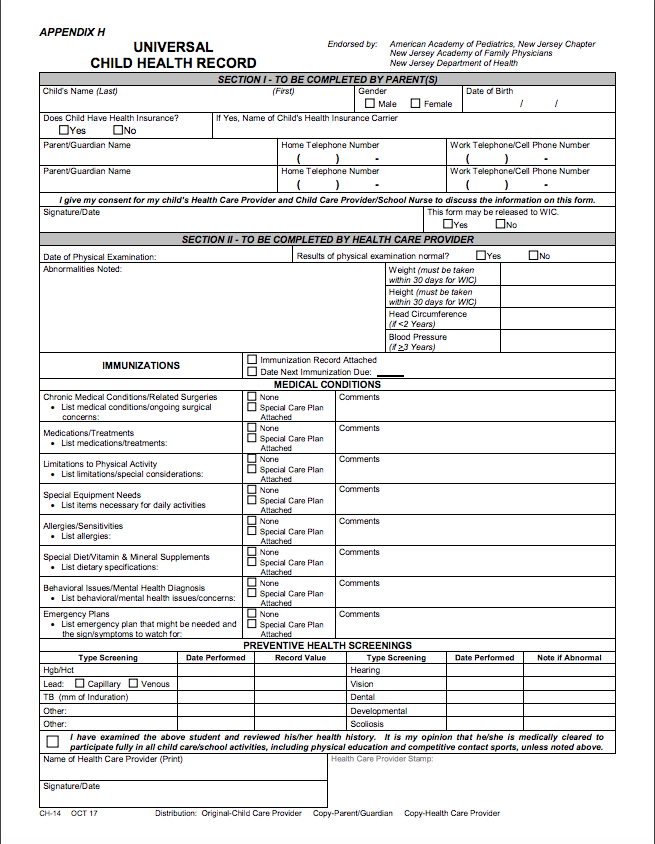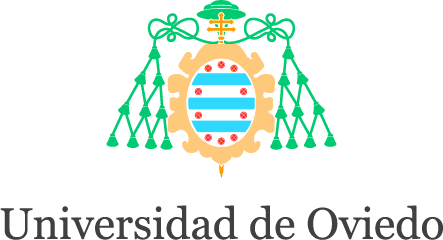NEOCLASSICAL ECONOMICS NEOCLASSICAL ECONOMICS IS THE NAME GIVEN
NEOCLASSICAL ECONOMICS NEOCLASSICAL ECONOMICS IS THE NAME GIVEN
Like the Classical economists before them the Neoclassical economists sought answers to the burning political questions of the
Neoclassical Economics
Neoclassical Economics is the name given to an economic theory that was developed at the end of the 19th and the beginning of the 20th Century in Europe. The main contributors to this theory were Léon Walras (1834-1910), Alfred Marshall (1842-1924) and Vilfredo Pareto (1848-1923).
Conceptual Overview
Like the Classical economists before them, Neoclassical economists sought answers to the burning political questions of their time. In the case of the Classical economists the issue was the distribution of power between landlords and industrialists; the issue that Neoclassical economists dealt with was the distribution of power between industrialists and workers. The end of the 19th Century saw a marked increase in the strength of workers’ organizations in Europe. In 1871 England passed a law that legalized unions.
Classical economics was squarely on the side of workers’. David Ricardo (1772-1823) explained that the profit that a capitalist receives is the “residual” that remains after the capitalist pays the cost of replacing the capital that has been used in production and the cost of labor. In other words, workers produce value and this value-added is the source of both the workers’ wages and the profit of the capitalist. Ricardo assumed that workers are paid a subsistence wage, and that the rest of the value-added is the capitalist’s profit. But if the profit is just a residual, there is no reason why it cannot be lowered in order to raise the standard of subsistence. Furthermore, if unions were successful at raising workers’ wages, society as a whole would benefit because according to the theory of Utilitarianism that was developed by another classical economist, Jeremy Bentham (1748-1832), economic efficiency means income equality. Karl Marx pointed out that what is considered subsistence is not determined by biology alone, and that it has changed throughout history according to the relative strength of employers and workers.
Neoclassical economics is the theory that argues that Ricardo is wrong. Profit is not a residual. Profit is determined by the level of the marginal productivity of capital, and the wage of workers is determined in a similar way by the marginal productivity of labor. Therefore, according to neoclassical economics, if a union succeeds in raising the workers’ wage, the inevitable result will be unemployment. In tandem with this new theory of wages and profits Pareto first dismissed the theory of Utilitarianism which called for redistributing income, and then developed a new definition of economic efficiency to replace it. According to Pareto’s definition, the higher union wage results in economic inefficiency.
Although entirely different from Ricardo’s theory of profits and wages, the Neoclassical theory of profits and wages is an application of another of Ricardo’s theories, that of land rent, and this is how Neoclassical economics got its name. According to Ricardo, parcels of land differ in their fertility. The most fertile land is put into production first, and as agricultural production expands less and less fertile parcels are added; the rent for less fertile parcels is lower than the rent for more fertile land. Neoclassical economists argue that the process of adding labor and capital when industrial production is expanded is similar. As industrial production expands, additional workers are hired (while the quantity of capital is held constant) and, exactly as the fertility of additional units of land in agriculture falls, Neoclassical economics assumes that the productivity of each additional worker, which is her marginal product, diminishes.
Neoclassical economics assumes that the employer hires workers one by one. When she considers whether to hire an additional worker she compares the value of that worker’s marginal product to the wage. As long as a worker’s value of marginal product exceeds the wage, the worker is hired. But because the marginal product is diminishing, eventually so many workers will have been hired that the value of the marginal product of an additional worker would be less than the wage. At this point the hiring will stop. Of course, if at this point the wage rate were raised, some workers would get fired, because the value of the marginal product of at least some workers would be below the new wage. Thus, if unions push the wage higher, some workers would become unemployed, a situation that is not only painful to these workers but is also Pareto inefficient.
The process of hiring capital is exactly the same. A unit of capital is added when the value of the marginal product of capital exceeds the rental price of capital and the process stops when, because of the decreasing marginal productivity of capital, the value of the marginal product of capital becomes lower than the rental price.
Critical Commentary & Future Directions
Following Piero Sraffa (1963), Joan Robinson and John Eatwell (1973) pointed out that Ricardo assumed that the marginal product of a worker couldn’t be separated from the marginal product of the capital that she uses. For example, a limousine service will not hire drivers without cars or cars without drivers. If the wage of a limousine driver were to increase, the owner of the limousine service would have to content herself with a smaller profit or she would have to idle not only drivers but also limousines. In fact, because in a perfectly competitive market the price of each ride is the same, the choice of the owner is either a smaller profit or closing down the business without any profits at all.
Not only the productivity of capital and labor are inseparable. Production often involves teams, and the contribution of each team member, whether it is a worker, a manager or a machine, cannot be measured separately from the productivity of the rest. The Classical economists believed that the division of the social product between those who produced it couldn’t be determined by the process of production itself. It does not appear that the Neoclassical economists succeeded in proving them wrong. Wages, profits and executive pay are not determined by the technology of production but by a political struggle of everybody against everybody else. Future research should explain how the outcomes of such struggles are determined, and how these mechanisms may be improved (Adler, 2003).
Moshe Adler
Further Readings and References
Adler, Moshe, Employees as Regulators. The New York Times, January 27, 2003
Marshall, Alfred, Principles of economics, London, New York, Macmillan for the Royal Economic Society, 1961.
Pareto Vilfredo,. Manual of political economy. Translated by Ann S. Schwier. Edited by Ann S. Schwier and Alfred N. Page. New York, A. M. Kelley, 1971.
Ricardo, David, Works and correspondence; edited by Pierro Sraffa, with the collaboration of M. H. Dobb.
Cambridge [Eng.] University Press for the Royal Economic Society, 1951-73.
Robinson, Joan and Eatwell, John, An Introduction to Modern Economics, McGraw-Hill Book Company (UK), 1973.
Sraffa, Piero, The Production of commodities by means of commodities; prelude to a critique of economic theory. Cambridge [England] University Press, 1963.
Walras, Léon, Elements of pure economics; or, The theory of social wealth. Translated by William Jaffé. Homewood, Ill., Published for the Royal Economic Society by Richard D. Irwin, 1965.
Tags: economics ======================, neoclassical economics, economics, neoclassical, given
- AVISO JURÍDICO IMPORTANTE LA INFORMACIÓN QUE SE OFRECE EN
- REPORT ON EXPERIENCES OF INGENIOUS RANGELAND COMANAGEMENT IN NORTHERN
- LIETUVOS ENERGETIKOS INSTITUTO AKADEMINĖS ETIKOS KODEKSAS 1 BENDROSIOS
- CORNERSTONE CLASS AND WORKSHOP BOOKING PROCEDURES AND CUSTOMER INFORMATION
- PARA RECUPERAR ARQUIVO CORROMPIDO RENOMEIE O ARQUIVO CORROMPIDO
- JOB DESCRIPTION JOB TITLE CRISIS INTERVENTION WORKER REPORTS TO
- APUNTES SOBRE EL FORUM CULTURAL MUNDIAL POR CLAUDIA CASTRO
- WYMAGANIA PROGRAMOWE EDUKACJA POLONISTYCZNA KLASA I KLASA II
- NONDISCLOSURE AGREEMENT THIS AGREEMENT HAS BEEN ENTERED INTO FROM
- GUIDE TO INDEPENDENCE TABLE OF CONTENTS SECTION 1MAGNIFICATION SECTION
- 316 MODULÁCIÓS RENDSZEREK MODULÁCIÓN ÁLTALÁNOSAN EGY JEL – A
- PLAN ADMINISTRATOR RESPONSE (TO BE COMPLETED AND RETURNED
- COMUNICADO DE PRENSA INDRA DESARROLLA “EMPRENDER ES POSIBLE” UN
- STANDARD IV PLANNING INSTRUCTION AND DESIGNING LEARNING EXPERIENCES FOR
- HOW TO READ A RESEARCH STUDY ARTICLE KNOW THE
- “HOW TO MAKE CORRECTIONS” POLICY STUDENTS ARE ALLOWED TO
- SREDNJA ŠOLA TEHNIŠKIH STROK ŠIŠKA LITOSTROJSKA CESTA 51 1000
- TC MİLLİ EĞİTİM BAKANLIĞI …………………………………… ……………………………………… SABOTAJLARA KARŞI KORUMA
- WEATHER PROTECTION GRILLE ALAS SPECIFICATION TEXTS EXTERNAL AIR INTAKE
- METODOLOGÍAS Y APLICACIONES PARA LA PRODUCCIÓN GANADERA DEL TRÓPICO
- P ATRICIA MILAGROS DIAZ PEDRESCHI JR PUERTO ETEN Nº
- ZARZĄDZENIE NR 17205 WÓJTA GMINY STARE BABICE Z DNIA
- DİSİPLİN KURULU YÖNETMELİĞİ BİRİNCİ BÖLÜM – GENEL HÜKÜMLER AMAÇ
- ADAPTACJA W ŻŁOBKU PRZED TWOIM DZIECKIEM STOI NOWY BARDZO
- DISZGRÁFIA KIÉRTÉKELŐ TÁBLÁZAT HELYESÍRÁSI PROBLÉMÁK HOSSZÚRÖVID MAGÁNHANGZÓPÁROKAT ÉSVAGY
- UČNI NAČRT PREDMETA COURSE SYLLABUS PREDMET FORENZIČNE PREISKAVE
- 200560 LOS DERECHOS HUMANOS Y EL MEDIO AMBIENTE COMO
- POLICY ON RELEASE OF “RAW DATA” FROM PSYCHOLOGICAL AND
- RÉPERTOIRE DE DROIT FORMULAIRE TITRES IMMOBILIERS DOCUMENT 312 MARS
- 4 KOLIK DOSPÍVAJÍCÍCH JE V ČESKU OHROŽENO POSTIŽENÍM MOZKU
 BUILDING CODE CERTIFICATION SECTION 232 US DEPARTMENT OF HOUSING
BUILDING CODE CERTIFICATION SECTION 232 US DEPARTMENT OF HOUSING 3 BỘ TÀI Chính Số 162002qđbtc Cộng HOÀ
3 BỘ TÀI Chính Số 162002qđbtc Cộng HOÀ THE REVOLUTIONARY GOVERNMENT OF ZANZIBAR MINISTRY OF EDUCATION AND
THE REVOLUTIONARY GOVERNMENT OF ZANZIBAR MINISTRY OF EDUCATION AND OGDEN JUNIOR PRESCHOOL ALTERNATE PICKUP AUTHORIZATION FORM FOR YOUR
OGDEN JUNIOR PRESCHOOL ALTERNATE PICKUP AUTHORIZATION FORM FOR YOUR OFICINA DE COMUNICACIÓN INFORMACIÓN CIENTÍFICA Y DIVULGACIÓN DE LA
OFICINA DE COMUNICACIÓN INFORMACIÓN CIENTÍFICA Y DIVULGACIÓN DE LAOPDRACHT “MIJN BEROEPSHOUDING” TYPERENDE BEROEPSHOUDING WERKEN IN DE SOCIAALAGOGISCHE
PRAKTIKUMSORDNUNG ANTESTAT PROTOKOLL UND ABTESTAT ZUM CHEMISCHEN PRAKTIKUM AN
SLOVENSKOTURŠKO STRATEŠKO PARTNERSTVO ODNOSI MED SLOVENIJO IN TURČIJO TEMELJIJO
LUNCHEN BÖRJADE LÄTT KAOTISKT VI VAR HÄNVISADE TILL DEN
 ¿CÓMO UTILIZAR EL SISTEMA CONTABLE MÓNICA? ¿CÓMO CREAR EL
¿CÓMO UTILIZAR EL SISTEMA CONTABLE MÓNICA? ¿CÓMO CREAR EL WIND POWER TO THE GRID EPE JOINT WIND ENERGY
WIND POWER TO THE GRID EPE JOINT WIND ENERGYDEVELOPING A JOINT IMPLEMENTATION FRAMEWORK TO SUPPORT THE SPF
 ANTICYBERBULLYING POLICY ST MANCHAN’S NS AIMS TO ENSURE THAT
ANTICYBERBULLYING POLICY ST MANCHAN’S NS AIMS TO ENSURE THATHAMMASLÄÄKÄREITÄ KOSKEVAA SÄTEILYLAINSÄÄDÄNTÖÄ JAAKKO PELTOLA DOS EHL
HUNGARIAN LINKING VOWELS AN ANALOGYBASED APPROACH LÁSZLÓ KÁLMÁN–PÉTER REBRUS–MIKLÓS
PRILOG VII POVRATNE INFORMACIJE UZ ISPORUKE OTPADA IZ ČLANKA
1 NINGÚ NO HA DEMOSTRAT QUE NO EXISTEIXI
KONUT KREDILERI İÇIN SÖZLEŞME ÖNCESI BILGILERE İLIŞKIN İHTIYARI DAVRANIŞ
ACCESO A LA UNIVERSIDAD SISTEMAS ESPECIALES MODALIDADES
 BASES Y CONVOCATORIA DE AYUDAS PARA ADQUISICION DE LIBROS
BASES Y CONVOCATORIA DE AYUDAS PARA ADQUISICION DE LIBROS